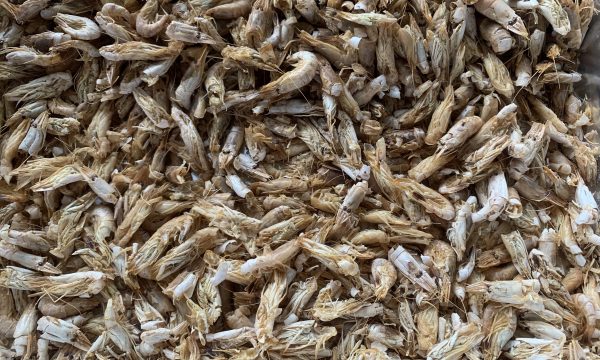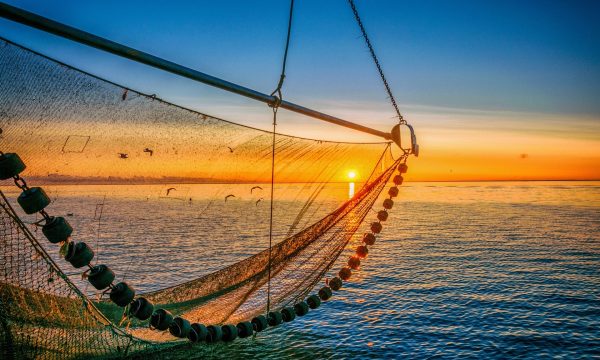Press release Fisheries make great strides in innovation and sustainability
In recent years, the Belgian fishing industry has made great strides toward more innovative and sustainable fishing. For example, 38 of the 59 active Belgian vessels are already equipped with the data platform VISTools, providing real-time information on fishing catch and fuel consumption. The maneuverable vessels with narrow gear allow precision fishing with the help of modern navigation tools so that zones with a vulnerable seafloor are avoided. The most commonly landed fish species are sole, plaice, squid, skate and shrimp. This emerges from the biennial Fisheries Report of the Agency for Agriculture and Sea Fisheries presented today by Flemish Minister of Fisheries Hilde Crevits together with the sector.
"In fact, you can look at our small fishing sector as one big living lab, where fishermen, scientists, nature organization and policy people are building in trust together to make it more sustainable. The transition is based on goodwill and shared expertise in the sector, innovations developed together with researchers at the suggestion of fishermen, positive guidance from NGOs and stimulating Flemish policy. Europe may - must - see what is being realized here. Through innovation, our fishermen can see real time data and fish much more precisely, with all the benefits that brings. We have more and more catch data, this is important to be able to give faster advice in the future about how much fish can be caught. Through the European Presidency we will also highlight this at an informal European Council in Bruges and Zeebrugge." Hilde Crevits
The Belgian fishing industry: small but diverse
The main fishing ground for the Belgian fleet, with a total of 64 licenses for vessels in 2022, was the Eastern Channel off Normandy and Brittany. This area accounted for 28% of landings in domestic and foreign ports, followed by the Central North Sea with 18%, Southeast Ireland with 15%, the Southern North Sea with 13%, the Irish Sea and Bristol Channel, both with 8%, and the Western Channel with 7%. Total fish landings in 2022 increased 1.5% from 2021 to 16,932 tons. Of these landings, 79% go to domestic ports, 21% to foreign ports, of which the Netherlands is the most important.
Belgian fisheries are typified by mixed fisheries, more specifically flatfish fisheries. The top 5 fish species landed for 2022 include sole, plaice, squid, skate and shrimp. Plaice has seen a sharp downward trend since 2016, compared with a doubling in landings of squid and shrimp. The aquaculture sector is small but diverse. Species produced in Flanders are freshwater cod, trout, pikeperch, prawns, caviar, oysters and mussels.
At EU level, total aquatic production from fisheries and aquaculture is estimated at nearly 5 million tons in 2020, which is only a 3% of the estimated global volume. This makes the EU the seventh largest producer on a global scale. However, the demand for aquatic production is more than double, more than 10 million tons by 2020. Consequently, the EU imports about 70% of total demand. In contrast, 20% of the catch available in the European Union is exported.
Data sharing via VISTools: unique in the world
Real time and automatic data from the vessel (location, speed, fuel consumption, catches, fish sizes and species) flows through to the skipper's dashboard, the ship owner and the scientist. This project started six years ago as the idea of fisherman Pedro Rappé, but by the end of 2023, more than half of Belgian vessels will already be equipped with the data platform VISTools. The platform offers many advantages: the skipper can see how to sail more energy-efficiently and the composition of each catch such as species and size of fish. For the scientist, the current catch data can further refine and speed up the estimation system of fish populations, which form the basis for the annual allocation of fish quotas.
"VISTools is an important next step in fisheries data automation. Using an on-board concentrator, interesting information about the catch, vessel location and fuel consumption is delivered automatically and quasi real-time to the skipper on the bridge, but also simultaneously to the shipowner on land. In this way, digitalization can contribute to a more sustainable and profitable fishery." Geert De Groote, ship owners' group
Catch prediction software in sight
In the future, artificial intelligence and automated processing of camera images of the fish caught may provide improved insight into the catch composition on board and scientific data collection around fisheries. This artificial intelligence also offers great potential for auctions.
'Fisheries sustainable' accreditation now visible to consumers
In 2022, the Fleming bought an average of 8.44 kg of fish, molluscs and crustaceans (fresh, frozen and processed-including fish salad and canned fish) worth 122.59 euros. More than half of this is bought as fresh. The Brusselsian is the biggest fish eater, buying 0.5 kg more fish, molluscs and crustaceans than the Flemish and 0.6 kg more than the Walloon. The Walloon eats relatively more canned fish than the Fleming, who prefers fresh fish.
As with total consumption, in 2022 we again see a shift from consumption at home to consumption away from home. 52% of the times we ate fish, molluscs or crustaceans, it was at home. This is a lot lower than in the Covid years 2020 and 2021 (70% and 60% respectively) and even slightly lower than in 2017 (then 54%). We buy fresh fish mainly from specialty stores or public markets. Consumption outside the home of fish, mollusks and crustaceans is thus significant. 19% of the times we eat these fish products we do so at restaurant (catering industry), 10% at work/school, 8% with family/friends and 11% happens in other places (including banquet halls, events and festivals). Salmon we eat mostly at home. Cod and mussels we eat relatively more outside the home. Among processed fish, the fish croquette is a typical outdoor product.
In recent years, the Belgian fisheries sector has taken action to raise the profile of its sustainability efforts and to inform consumers about them, notably through the development of the "Fisheries Sustainability Recognition". This recognition is based on an objective and science-based tool that can measure and make visible the sustainability of fishing activities. Since June 2018, the recognition has been visible on the auction clock of Belgian auctions and recently we have also found it on the sale of fish in end-consumer outlets.
Challenges for the fishing industry in the next few years
The Belgian fishing industry has already been confronted with several crises in recent years, such as the Brexit and the corona pandemic. However, the storm has not yet subsided. As a result of the Brexit, catch quotas will have to be renegotiated with the United Kingdom every year starting in 2026. The often conflicting interests at the negotiating table will undoubtedly make for tough negotiations.
Furthermore, Belgian fishermen are already feeling the effects of climate change. There is also the rapid expansion of the blue economy (energy production, wind farms) and the intensified renewal of Marine Spatial Planning. As a result, there is less and less space available for fishing where it is economically and ecologically beneficial to fish.
Read the full report (in Dutch) here: Visserijrapport - VIRA | Vlaanderen.be


